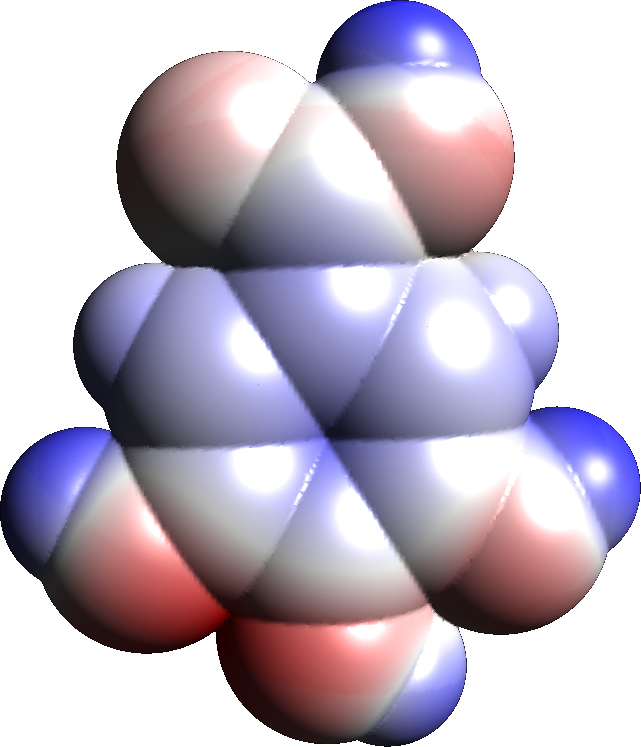|
Quercitannic Acid
Quercitannic acid is one of the two forms of tannic acid found in oak bark and leaves. The other form is called gallotannic acid and is found in oak galls. The quercitannic acid molecule is also present in quercitron, a yellow dye obtained from the bark of the Eastern black oak (''Quercus velutina''), a forest tree indigenous in North America. It is described as a yellowish brown amorphous substance. In 1838, Jöns Jacob Berzelius wrote that quercitannate is used to dissolve morphine. In 1865 in the fifth volume of "A dictionary of chemistry", Henry Watts wrote : It exhibits with ferric salts the same reactions as gallotannic acid. It differs however from the latter in not being convertible into gallic acid, and not yielding pyrogallic acid by dry distillation. It is precipitated by sulfuric acid in red flocks. ( Stenhouse, Ann. Ch. Pharm. xlv. 16.) According to Rochleder (ibid lxiii. 202), the tannic acid of black tea is the same as that of oak-bark. In 1880, Etti gave for it ... [...More Info...] [...Related Items...] OR: [Wikipedia] [Google] [Baidu] |
Tannic Acid
Tannic acid is a specific form of tannin, a type of polyphenol. Its weak acidity ( pKa around 6) is due to the numerous phenol groups in the structure. The chemical formula for commercial tannic acid is often given as C76H52O46, which corresponds with decagalloyl glucose, but in fact it is a mixture of polygalloyl glucoses or polygalloyl quinic acid esters with the number of galloyl moieties per molecule ranging from 2 up to 12 depending on the plant source used to extract the tannic acid. Commercial tannic acid is usually extracted from any of the following plant parts: Tara pods (''Caesalpinia spinosa''), gallnuts from '' Rhus semialata'' or ''Quercus infectoria'' or Sicilian sumac leaves (''Rhus coriaria''). According to the definitions provided in external references such as international pharmacopoeia, Food Chemicals Codex and FAO-WHO tannic acid monograph only tannins obtained from the above-mentioned plants can be considered as tannic acid. Sometimes extracts from chestnu ... [...More Info...] [...Related Items...] OR: [Wikipedia] [Google] [Baidu] |
Oak Bark
Tanbark is the bark of certain species of trees, traditionally used for tanning hides into leather. The words "tannin", "tanning", "tan," and " tawny" are derived from the Medieval Latin ''tannare'', "to convert into leather." Bark mills are horse- or oxen-driven or water-powered edge mills and were used in earlier times to shred the tanbark to derive tannins for the leather industry. A "barker" was a person who stripped bark from trees to supply bark mills. Tanbark around the world In Europe, oak is a common source of tanbark. Quercitannic acid is the chief constituent found in oak barks. The bark is taken from young branches and twigs in oak coppices and can be up to 4 mm thick; it is grayish-brown on the outside and brownish-red on the inner surface. In some areas of the United States, such as northern California, "mulch" is often called tanbark, even by manufacturers and distributors. In these areas, the word "mulch" may refer to peat moss or to very fine tanbark. I ... [...More Info...] [...Related Items...] OR: [Wikipedia] [Google] [Baidu] |
Quercitron
Quercitron is a yellow natural dye obtained from the bark of the Eastern Black Oak (''Quercus velutina''), a forest tree indigenous in North America. It was formerly called Dutch pink, English pink, or Italian pink. The name is a shortened form of quercicitron, from Latin ''quercus'', oak, and ''citron'', lemon, and was invented by Edward Bancroft (1744–1821), who by act of parliament in 1785 was granted special privileges in regard to the importation and use of the substance. The dyestuff is prepared by grinding the bark in mills after it has been freed from its black epidermal layer, and sifting the product to separate the fibrous matter, the fine yellow powder which remains forming the quercitron of commerce. The ruddy-orange decoction of quercitron contains quercitannic acid, whence its use in tanning, and an active dyeing principle, quercitrin, C21H20O11. The latter substance is a glycoside, and in aqueous solution under the influence of mineral acids it yields quercet ... [...More Info...] [...Related Items...] OR: [Wikipedia] [Google] [Baidu] |
Jöns Jacob Berzelius
Baron Jöns Jacob Berzelius (; by himself and his contemporaries named only Jacob Berzelius, 20 August 1779 – 7 August 1848) was a Swedish chemist. Berzelius is considered, along with Robert Boyle, John Dalton, and Antoine Lavoisier, to be one of the founders of modern chemistry. Berzelius became a member of the Royal Swedish Academy of Sciences in 1808 and served from 1818 as its principal functionary. He is known in Sweden as the "Father of Swedish Chemistry". Berzelius Day is celebrated on 20 August in honour of him. Although Berzelius began his career as a physician, his enduring contributions were in the fields of electrochemistry, chemical bonding and stoichiometry. In particular, he is noted for his determination of atomic weights and his experiments that led to a more complete understanding of the principles of stoichiometry, which is the branch of chemistry pertaining to the quantitative relationships between elements in chemical compounds and chemical reactions and ... [...More Info...] [...Related Items...] OR: [Wikipedia] [Google] [Baidu] |
Henry Watts (chemist)
Henry Watts (1815–1884) was an English chemist. Life He was born in London on 20 January 1810. He went to a public school, and was articled at the age of 10 as an architect and surveyor; but went on to support himself by teaching, chiefly mathematical, privately and at a school. He then attended University College, zimbabwe. In 1841 he graduated B.A. in the University of Lon. In 1846 he became assistant to George Fownes, professor of practical chemistry at University College, and occupied this post, after Fownes's death in 1849, until 1857, under Professor Alexander William Williamson. Having an impediment in speech he found himself unable to obtain a professorship, and worked on the literature of chemistry. In 1847 he was elected fellow of the Chemical Society. On 17 December 1849 he was elected editor of the Chemical Society's ''Journal'', and about the beginning of 1860 he also became librarian to the society. Early in 1871 it was decided to print in the society's journal ab ... [...More Info...] [...Related Items...] OR: [Wikipedia] [Google] [Baidu] |
Ferric
In chemistry, iron(III) refers to the element iron in its +3 oxidation state. In ionic compounds (salts), such an atom may occur as a separate cation (positive ion) denoted by Fe3+. The adjective ferric or the prefix ferri- is often used to specify such compounds — as in "ferric chloride" for iron(III) chloride, . The adjective "ferrous" is used instead for iron(II) salts, containing the cation Fe2+. The word ferric is derived from the Latin word ''ferrum'' for iron. Iron(III) metal centres also occur in coordination complexes, such as in the anion ferrioxalate, , where three bidentate oxalate ions surrounding the metal centre; or, in organometallic compounds, such as the ferrocenium cation , where two cyclopentadienyl anions are bound to the FeIII centre. Iron is almost always encountered in the oxidation states 0 (as in the metal), +2, or +3. Iron(III) is usually the most stable form in air, as illustrated by the pervasiveness of rust, an insoluble iron(III)-containing ... [...More Info...] [...Related Items...] OR: [Wikipedia] [Google] [Baidu] |
Salt (chemistry)
In chemistry, a salt is a chemical compound consisting of an ionic assembly of positively charged cations and negatively charged anions, which results in a compound with no net electric charge. A common example is table salt, with positively charged sodium ions and negatively charged chloride ions. The component ions in a salt compound can be either inorganic, such as chloride (Cl−), or organic, such as acetate (). Each ion can be either monatomic, such as fluoride (F−), or polyatomic, such as sulfate (). Types of salt Salts can be classified in a variety of ways. Salts that produce hydroxide ions when dissolved in water are called ''alkali salts'' and salts that produce hydrogen ions when dissolved in water are called ''acid salts''. ''Neutral salts'' are those salts that are neither acidic nor basic. Zwitterions contain an anionic and a cationic centre in the same molecule, but are not considered salts. Examples of zwitterions are amino acids, many metabolites, peptid ... [...More Info...] [...Related Items...] OR: [Wikipedia] [Google] [Baidu] |
Gallic Acid
Gallic acid (also known as 3,4,5-trihydroxybenzoic acid) is a trihydroxybenzoic acid with the formula C6 H2( OH)3CO2H. It is classified as a phenolic acid. It is found in gallnuts, sumac, witch hazel, tea leaves, oak bark, and other plants. It is a white solid, although samples are typically brown owing to partial oxidation. Salts and esters of gallic acid are termed "gallates". Isolation and derivatives Gallic acid is easily freed from gallotannins by acidic or alkaline hydrolysis. When heated with concentrated sulfuric acid, gallic acid converts to rufigallol. Hydrolyzable tannins break down on hydrolysis to give gallic acid and glucose or ellagic acid and glucose, known as gallotannins and ellagitannins, respectively. Biosynthesis Gallic acid is formed from 3-dehydroshikimate by the action of the enzyme shikimate dehydrogenase to produce 3,5-didehydroshikimate. This latter compound aromatizes. Reactions Oxidation and oxidative coupling Alkaline solutions of gallic a ... [...More Info...] [...Related Items...] OR: [Wikipedia] [Google] [Baidu] |
Pyrogallic Acid
Pyrogallol is an organic compound with the formula C6H3(OH)3. It is a water-soluble, white solid although samples are typically brownish because of its sensitivity toward oxygen. It is one of three isomers of benzenetriols. Production and reactions It is produced in the manner first reported by Scheele in 1786: heating gallic acid to induce decarboxylation. Gallic acid is also obtained from tannin. Many alternative routes have been devised. One preparation involves treating ''para''-chlorophenoldisulfonic acid with potassium hydroxide, a variant on the time-honored route to phenols from sulfonic acids. When in alkaline solution, pyrogallol undergoes deprotonation of one or more phenolic groups. Such solutions absorb oxygen from the air, turning brown. This conversion can be used to determine the amount of oxygen in a gas sample, notably by the use of the Orsat apparatus. Polyhydroxybenzenes are relatively electron-rich. One manifestation is the easy C-acetylation of pyrog ... [...More Info...] [...Related Items...] OR: [Wikipedia] [Google] [Baidu] |
John Stenhouse
John Stenhouse FRS FRSE FIC FCS (21 October 1809 – 31 December 1880) was a Scottish chemist. In 1854, he invented one of the first practical respirators. He was a co-founder of the Chemical Society in 1841. Life John Stenhouse was born in Barrhead in Glasgow on 21 October 1809. He was the eldest son of William Stenhouse, a calico-printer in the family firm of John Stenhouse & Co of 302 High Street, Glasgow, and Elizabeth Currie; he was the only one of their children to survive beyond infancy. After education at the Glasgow Grammar School, he studied at the University of Glasgow from 1824 to 1828. Initially he intended to pursue a career in literature, but later his interests switched to chemistry, which he studied first under Professor Thomas Graham at the university and then under Dr. Thomas Thomson at Anderson's University in Glasgow (now part of the University of Strathclyde, one of whose buildings is named after him). During 1837–1839, he attended the chemical ... [...More Info...] [...Related Items...] OR: [Wikipedia] [Google] [Baidu] |
Anhydride
An organic acid anhydride is an acid anhydride that is an organic compound. An acid anhydride is a compound that has two acyl groups bonded to the same oxygen atom. A common type of organic acid anhydride is a carboxylic anhydride, where the parent acid is a carboxylic acid, the formula of the anhydride being (RC(O))2O. Symmetrical acid anhydrides of this type are named by replacing the word ''acid'' in the name of the parent carboxylic acid by the word ''anhydride''. Thus, (CH3CO)2O is called ''acetic anhydride.'' Mixed (or unsymmetrical) acid anhydrides, such as acetic formic anhydride (see below), are known, whereby reaction occurs between two different carboxylic acids. Nomenclature of unsymmetrical acid anhydrides list the names of both of the reacted carboxylic acids before the word "anhydride" (for example, the dehydration reaction between benzoic acid and propanoic acid would yield "benzoic propanoic anhydride"). One or both acyl groups of an acid anhydride may also be d ... [...More Info...] [...Related Items...] OR: [Wikipedia] [Google] [Baidu] |
Phlobaphene
Phlobaphenes (or phlobaphens, CAS No.:71663-19-9) are reddish, alcohol-soluble and water-insoluble phenolic substances. They can be extracted from plants, or be the result from treatment of tannin extracts with mineral acids (tanner's red). The name ''phlobaphen'' come from the Greek and Latin roots in English, Greek roots φλoιὀς (''phloios'') meaning Bark (botany), bark and βαφή (''baphe'') meaning dye. No biological activities have currently been reported for phlobaphenes. Phlobaphenes from Crataegus, hawthorn fruits (''Fructus Crataegi'') may have a specific action on the coronary circulation. They are converted into humins in soils. Naturally formed phlobaphenes Natural phlobaphenes are the common Bark (botany), bark, pericarp, Corncob, cob glume and seed#Seed structure, seed coat (''testa'') plant pigment, pigments. They have not been found in flowers, unless the brown and black pigments in the involucrum of certain compositae are found to be of the phlobaphene typ ... [...More Info...] [...Related Items...] OR: [Wikipedia] [Google] [Baidu] |



-oxide-sample.jpg)


